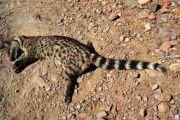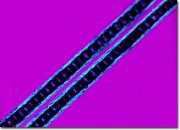Difference between revisions of "Civet hair"
Jump to navigation
Jump to search
| (One intermediate revision by one other user not shown) | |||
| Line 10: | Line 10: | ||
Vivarridae; civet cat hair; desmerdyr (Dan.); Schleichkatzen (Deut.); viverridés (Fr.); civetkatachtigen (Ned.); civeta (Port.) | Vivarridae; civet cat hair; desmerdyr (Dan.); Schleichkatzen (Deut.); viverridés (Fr.); civetkatachtigen (Ned.); civeta (Port.) | ||
| − | == | + | ==Resources and Citations== |
* ''Encyclopedia Britannica'', http://www.britannica.com Comment: civet" Encyclopædia Britannica [Accessed October 16, 2003]. | * ''Encyclopedia Britannica'', http://www.britannica.com Comment: civet" Encyclopædia Britannica [Accessed October 16, 2003]. | ||
| Line 16: | Line 16: | ||
* Zora Sweet Pinney, 'A Handle on the Terms used for Artists' Brushes', unpublished glossary, 1999 | * Zora Sweet Pinney, 'A Handle on the Terms used for Artists' Brushes', unpublished glossary, 1999 | ||
| − | * Wikipedia | + | * Wikipedia: http://en.wikipedia.org/wiki/Civet (Accessed Oct. 18, 2005) |
[[Category:Materials database]] | [[Category:Materials database]] | ||
Latest revision as of 10:22, 30 May 2022
Description
Long, coarse hair obtained from civet cats (family Vivarridae) that are native to Africa, southern Europe, and Asia. The black and white civet hair is strong, straighter, and more resilient than Skunk hair. Civet hair was once used for Paint and Varnish brushes but has since been replaced by synthetic fibers. In 2004, the U.S. banned the importation of civets as potential disease carriers.
Synonyms and Related Terms
Vivarridae; civet cat hair; desmerdyr (Dan.); Schleichkatzen (Deut.); viverridés (Fr.); civetkatachtigen (Ned.); civeta (Port.)
Resources and Citations
- Encyclopedia Britannica, http://www.britannica.com Comment: civet" Encyclopædia Britannica [Accessed October 16, 2003].
- Zora Sweet Pinney, 'A Handle on the Terms used for Artists' Brushes', unpublished glossary, 1999
- Wikipedia: http://en.wikipedia.org/wiki/Civet (Accessed Oct. 18, 2005)

